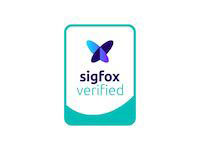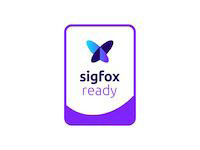Gaining the appropriate certification is vital if you are going to sell and distribute your Internet of Things (IoT) product commercially. Without it, your product won’t have a legal route to market. It is, therefore, one element of your project that should be under constant consideration.
In this article we will consider what needs to be done and make some recommendations to ensure the appropriate certifications are achieved as painlessly as possible.
WHAT NEEDS TO BE DONE
If your product is going to use the Sigfox network, you will need to attain two different types of certification. First, the appropriate certifications from Sigfox. Second, the general quality accreditation or type approval for the market(s) in which you wish to sell your product.
Sigfox certification has two parts: Sigfox Verified and Sigfox Ready. We will consider these in more detail shortly.
Type approval is official certification from a government or other body that a manufactured item meets required specifications – and is an essential prerequisite if you are going to be able to legally sell your product in that market.
Since testing in an approved test centre, generating the necessary paperwork and then submitting the test data to the relevant authorities can take several weeks or months, it is vital that you get the scheduling of this certification process right.
The best way to do this is to be cognisant of all three certification requirements throughout your project. Whenever you make a change to your device or a component of your device, consider how it might affect all three certification requirements:
1a. Sigfox Verified Certification
1.b Sigfox Ready Certification
2. Type approval in each of your target markets
1A. SIGFOX VERIFIED CERTIFICATION

Sigfox certification must be sought by end customers that are developing their own radio solutions and semiconductor companies that are developing an integrated Sigfox module.
Sigfox Verified certification tests that the Sigfox protocol is well implemented in the radio solution and that the Sigfox requirements in terms of spectrum and modulation are complied with.
Sigfox verified is a pass or fail test. It can be undertaken as soon as the radio component of your solution is in its final form.
1B. SIGFOX READY CERTIFICATION

Sigfox Ready certification tests the radio performance of the device. It is not a pass or fail test but, rather, a measurement of the radiated radio performance.
It is important that this measurement is appropriate for the projected use case(s) of your device. It is possible to have a test which returns a measurement value which is not at a sufficient value to allow effective operation. For instance, if your device is to operate in indoor conditions then the class should be the best possible (0u class). On the other hand, if your use case is mainly for use within an outdoor setting, a lower class will be suitable.
It is therefore important to understand the minimum and maximum values required for your device. The Sigfox Ready certification process is managed on the “Sigfox Build” online platform.
2. TYPE APPROVAL
The market for radio devices is highly regulated in all countries around the world and is considered very sensitive. All radio and short-range devices must comply with country-specific requirements to obtain regulatory or type approval.
Depending on the country, the necessary processes to secure type approval can vary considerably. The regime may range from “self-declaration” to “classical type approval” to more complicated rules.
Securing testing and test reports in a strict and well-regarded testing regime (e.g. FCC in the USA, or CE in the EU) can help to fast-track applications in other regulatory schemes if they are prepared to accept the test reports from the approved regime. In these cases, retesting under the new jurisdiction is avoided, and the device type approval process is simply a filing process. Nevertheless, this simple paperwork exercise can take several weeks.
Very often type approval is not a single process. It may be that you will need to secure type approval for individual components as well as the completed device, for example, the casing, battery, modem and radio components may all need separate type approval.
It is, therefore, vital to consider how changes to any of these components affects their own type approval – and that of the final device.
One way to reduce the burden of certification is to use pre-approved components within your device, e.g. select a battery that already has type approval in your target markets. This can help to reduce the development time, administrative burden and, consequently, the overall time to market. However, there are likely to be inevitable trade-offs in terms of profit and compromises in design and control.
If you plan to produce large volumes of your device, these trade-offs may not be economically viable. If so, certification of your device and its constituent components must be high on your agenda.
However, be careful about what registering a type approval may mean in terms of making filed information public; if you aren’t ready to go public, you will need to ensure commercially sensitive information isn’t included with your filing. If you can’t avoid including commercially sensitive information, you’ll need to give the decision about when to file careful consideration. And deciding when to make that information public is another pressure on your project timing.
THE CERTIFICATION MINDSET
A successful project to bring any new device to market will require a focus on certification from the very beginning. You will need to understand the standards in each of your target markets, so you can be sure that what you are designing and developing will be compliant.
A healthy certification mind set throughout the duration of your project will consider even the smallest deviation to your design and what its impact will be on the prospects of certification.
If you consider that it can take several weeks to secure a spot in an approved testing facility, a week for testing, another couple of weeks for the paperwork to be generated and then several additional weeks for the submission and processing of that paperwork by the regulatory authorities, you can see why advance planning is essential.
If the device fails on first testing, it can result in a delay of several months – as well as the unnecessary costs of retesting which are likely to be in the thousands of dollars and the significant setback in terms of time to market.
Planning ahead to optimize the scheduling of the test can seem a little like an art form. If the project runs over, you may miss your test slot. However, the test must be on the final version of the device. Any changes or deviations post-testing may well result in the requirement for the device and/or component to be retested – creating more unnecessary expense and a further delay to market.
It is also important to take an international view – there are possibilities to optimise the overall time to market if you do. Some countries will recognise the type approval awarded by the regulator in certain other approved jurisdictions. Therefore, the order in which you schedule regulatory approvals in different countries can make a huge difference to the overall time, expense and effort.
As we can see, maintaining a clear and strategic focus on certification throughout the project can be a decisive success factor. As you begin to focus on the development of your device it can be easy to forget certification, but it does have a very significant impact on your go-to-market strategy.
It is important to keep certification and the certification requirements in mind over the lifetime of your project.
